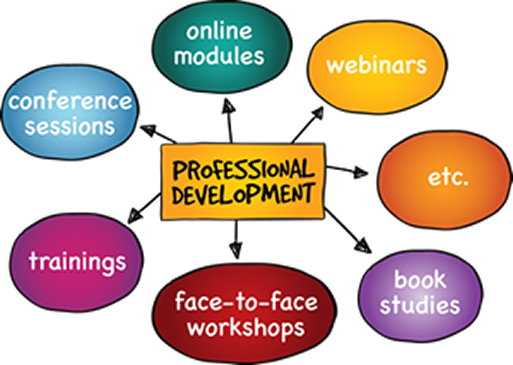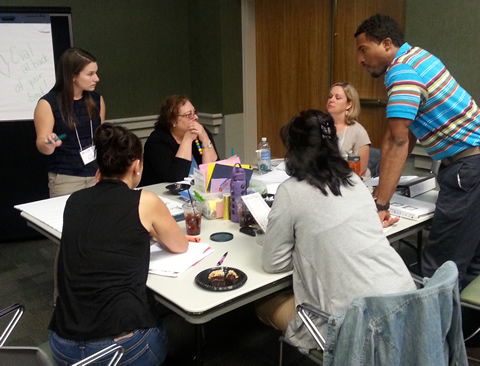Articles & Handouts
7 Traits of Expert Facilitators (external website)
The Bob Pike Group
Visit this site to download a free guide that explains 7 traits of great facilitators who can guide and engage learners during training.
DO’s and DON’Ts for Designing a Successful Webinar (external website)
The Bob Pike Group
Visit this site to download a free guide with information about Do’s and Don’ts for using webinars for training, tips to increase engagement, and ways webinars are different from classroom training.
Dunst, C. J. (2015). Improving the design and implementation of in-service professional development in early childhood intervention. (external website) Infants & Young Children, 28(3), 210-219.
This article describes a model for designing and implementing evidence-based professional development. Key features of this model are described in depth.
Employee Training: Ten Tips for Making It Really Effective (external website)
Vicki Heath
This article offers 10 tips supervisors can use when planning and providing training to build employees knowledge and skills.
Facilitating Reflection: A Manual for Leaders and Educators (external website)
Georgetown University
This guide explains how to facilitate reflection using specific strategies and activities. Leaders can use this information to facilitate reflection with staff on practices during staff development or other professional development opportunities.
Teachers as Learners: Elements of Effective Professional Development (external website)
Kathy A. Dunne
This chapter provides guidance about principles of effective professional development (PD), evaluating and designing PD, and PD strategies.
Tips for Effective Webinars (external website)
Maria H. Anderson
eLearn Magazine
This article provides lots of specific tips for what to do before, during, and after a webinar to make it a success.
Watson, C., & Gatti, S. N. (2012). Professional development through reflective consultation in early intervention. Infants & Young Children, 25(2), 109-121. (external website)
This article describes the use of reflective consultation in a collaborative pilot project that integrates infant mental health approach to supporting ongoing professional development of early interventionists.
What Do We Mean by Professional Development in the Early Childhood Field? (external website)
National Professional Development Center on Inclusion
This document presents a definition and conceptual framework for professional development in early childhood. Defining what is meant by professional development is intended to guide efforts aimed at ensuring that the early childhood workforce is highly qualified and effective in working with young children (birth through 8) and their families.
What Makes an Effective Early Childhood Professional Development Provider?
VA Cross Sector Professional Development Team (VCPD)
This handout can be used as a guide to competencies for early childhood PD providers. Competencies are included for the following categories: knowledge of adult learning principles; professionalism/ethics, cultural competence; instructional design; delivery of professional development; technology; and field/professional experience.
What Works in Professional Development? (external website)
This research synthesis summarizes findings from a review of PD studies and focuses on what was learned from studies that exemplified best practices. Information is provided about workshops, outside experts, time, follow-up, activities, and content.






